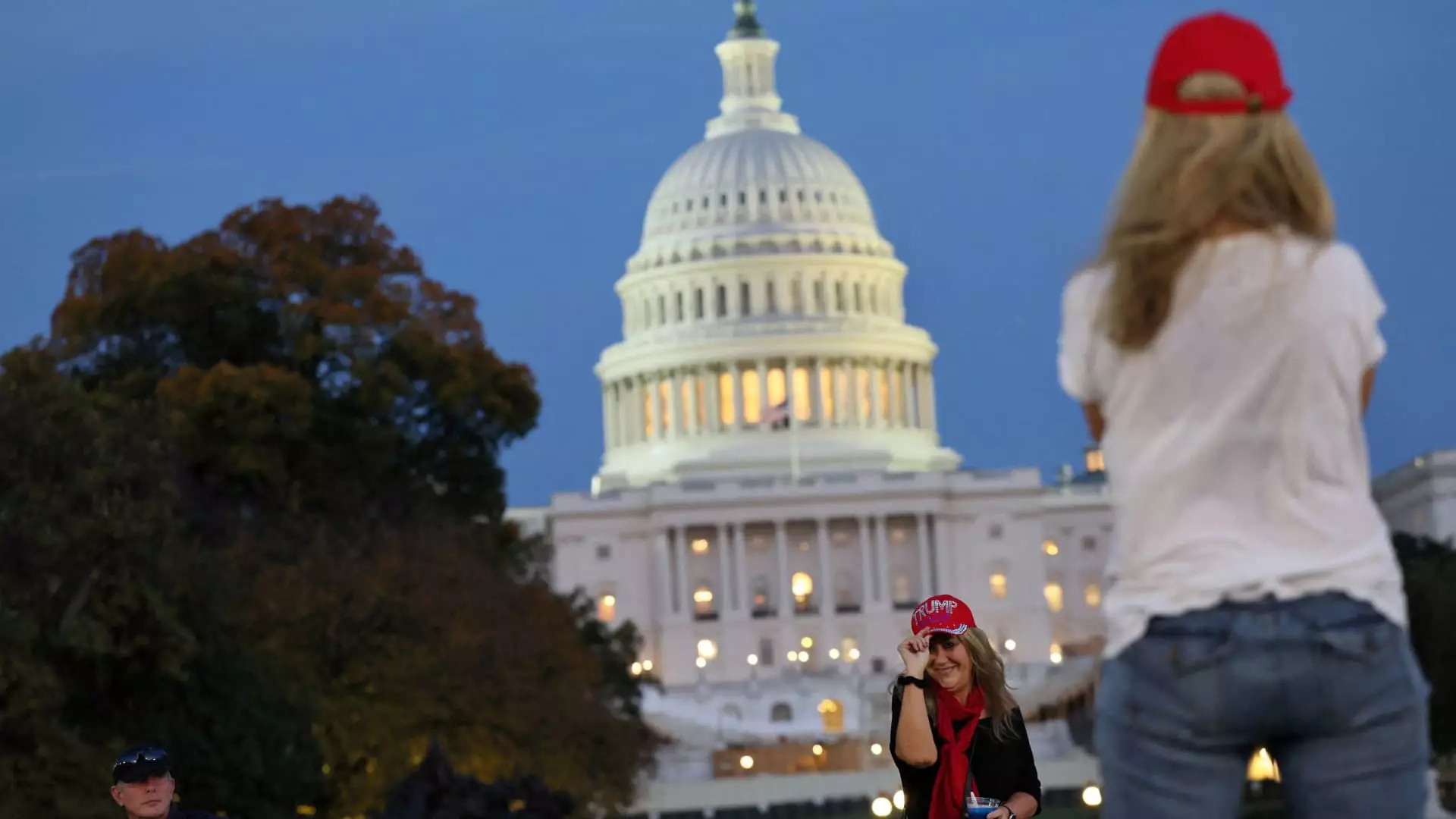With Donald Trump’s ascension to the presidency, the financial landscape is under scrutiny by individual investors eager to decipher the implications for their portfolios. The immediate aftermath of his election witnessed a remarkable surge in the stock market, exemplified by the Dow Jones Industrial Average surpassing 44,000 for the first time. While such a rally ignites enthusiasm among traders, financial experts urge a more measured response, advocating a reassessment of personal finance strategies based on foundational principles rather than fleeting market movements.
Leading financial advisors recommend that clients should adhere to pre-established financial plans rather than engage in impulsive reactions to the election result. Jude Boudreaux, a certified financial planner based in New Orleans, emphasizes the significance of long-term strategies tailored to individual goals. “Clients who have a comprehensive financial plan should retain their strategy,” he contends, suggesting that adjustments can come later as political developments clarify. This approach underscores the notion that sustainable investing is built on a solid foundation, rather than temporary market booms.
Lee Baker, another established financial advisor, echoes this sentiment, advising clients against making wholesale changes in their financial strategies post-election. He notes the possibility of slight adjustments to better align with emerging policies but insists that radical changes are not warranted at this stage. Investors must remember that markets invariably respond to uncertainty; therefore, any significant shifts in asset allocation should be considered with deliberate caution.
The initial euphoria in the markets is intriguing yet fraught with complexities. While experts like Stacy Francis observe a collective sigh of relief following a clear electoral outcome, she warns against conflating short-term gains with long-term validation of Trump’s policies. The market’s initial uptick can be attributed to various factors, including a historic level of clarity regarding the leadership direction of the country, rather than an endorsement of impending policy changes.
Moreover, market participants anticipate that Trump’s administration may catalyze faster economic growth, driven by more favorable regulatory environments. However, the ultimate trajectory of market performance is uncertain; historical trends suggest that presidential tenures, Democrat or Republican alike, tend to show resilience, leaving the determination of market gains largely detached from political affiliation.
Aside from broader market trends, individual investors must align their portfolios based on personal financial goals, risk tolerance, and investment time horizons. Marguerita Cheng of Blue Ocean Global Wealth advocates for a strategy that remains intrinsic to an individual’s unique circumstances rather than dictated solely by political outcomes. “These foundational principles should guide asset allocation decisions,” she notes, emphasizing the necessity of personalized financial strategies.
However, there are expected opportunities worth evaluating. If Trump implements regulatory rollbacks, sectors such as energy, finance, and industrials might see favorable growth. This prospect suggests that investors could consider diversified exposure via index funds that include these sectors while safeguarding against sector-specific risks.
Trump’s promises during his campaign included tantalizing prospects such as extending tax cuts introduced in previous years. The Tax Cuts and Jobs Act of 2017, which laid the groundwork for reduced taxation, is set to expire in 2025. Financial analysts speculate that if extended or augmented, these tax cuts could catalyze a more significant economic boost in subsequent years. For both individuals and corporations, the anticipation of such tax incentives likely contributed to the recent wave of bullish sentiment on Wall Street.
Yet experts caution against relying too heavily on these potential changes. As David Haas from Cereus Financial Advisors articulates, the ambiguity surrounding proposed legislation means that investors must tread carefully. The effectiveness of proposed changes, such as tax exemptions on Social Security benefits, requires thorough legislative processes before becoming feasible, highlighting the need for vigilance amidst speculation.
Finally, the policies espoused by Trump may introduce inflationary risks that could destabilize the current economic equilibrium. Potential increases in tariffs could elevate prices for imported goods. Moreover, a rush of disposable income due to favorable tax policies might contribute to rising demand, thereby aggravating inflation pressures. This scenario could compel the Federal Reserve to reconsider its already lowered interest rates, adding another layer of complexity to post-election financial planning.
While Donald Trump’s victory introduces a plethora of opportunities and uncertainties in the investment realm, the guiding principle for savvy investors remains steadfast: stick to your plan, evaluate emerging circumstances critically, and remain adaptable in a dynamically changing economic environment. A measured, insightful approach will be key to navigating the post-election financial landscape successfully.


Leave a Reply